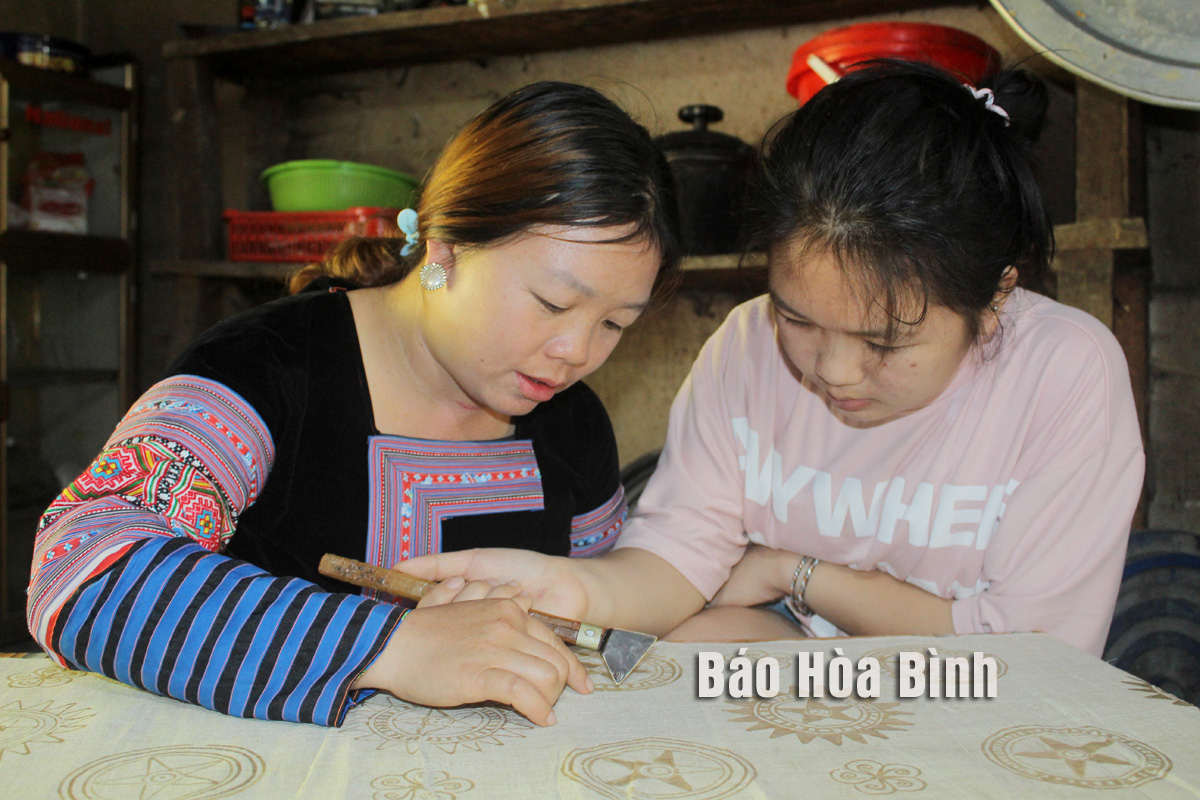



Sung Y Nong, Pa Co 1 village, Pa Co commune, passes down the traditional craft of beeswax painting to her daughter.
Traditional crafts such as beeswax painting, indigo dyeing, and brocade weaving have long been practiced by the Mong ethnic people in Pa Co. However, they faced decline for a period due to the popularity of cheaper ready-made products that require less effort. Fortunately, thanks to the local community’s efforts, these crafts have not only been preserved but also become profitable livelihoods for local residents.
In the commune, Pa Co 1 village stands out as a stronghold for brocade weaving, with over half of its 76 households engaged in this craft. For years, Sung Y Nong has almost completely quit farming to focus on brocade weaving, finding it to be a stable source of income. During peak seasons, Nong can earn over 20 million VND (786.7 USD) per month, averaging around 10 million VND monthly. She shared: "I learned beeswax painting, indigo dyeing, and weaving from my mother when I was 10 years old. Now, I am passing down these skills to my children to preserve our ethnic traditions while earning a living."
Similarly, over the past five years, Giang Y Do from the same village has also focused on brocade weaving. Together with her mother, she makes beeswax painting, dyes fabrics, and weaves them into various products such as bags and traditional Mong clothes for sale to customers, primarily from Thailand and Laos. This work provides a steady income, averaging about 10 million VND per month per person. Do expressed her hope for assistance from local authorities to introduce their products to more domestic and international consumers.
Besides Pa Co 1, brocade weaving has also seen a strong resurgence in Cha Day village which is developing the homestay tourism model. Coming to local homestays, visitors will have an opportunity to experience beeswax painting and indigo dyeing.
Phang A Cha, Vice Chairman of the Pa Co commune People's Committee, emphasised that while current incomes still rely on agriculture, which does not bring about sustainable economic benefits, tourism development is a priority of the commune.
To achieve this goal, revitalising traditional crafts and preserving the distinctive cultural aspects of the Mong ethnic group are crucial. Currently, several beeswax painting experience models are developing in Cha Day and Pa Co 1 villages. In the coming time, the commune will focus on encouraging residents to revive ‘lanh’ (Linum usitatissimum) cultivation and brocade weaving to create unique products that can contribute to community-based tourism development.